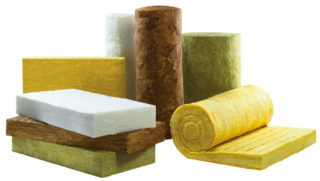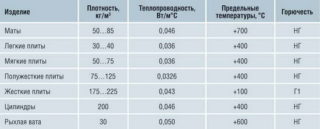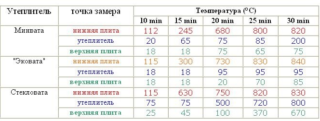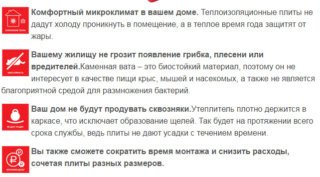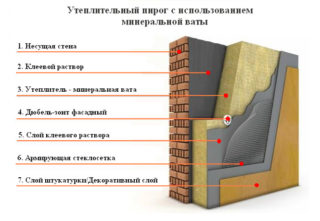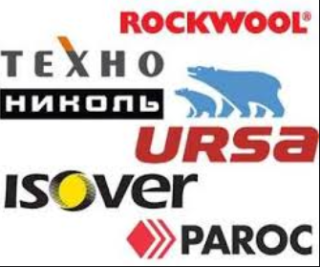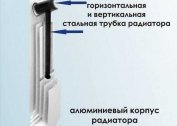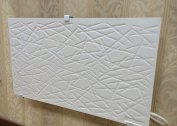Mineral wool is a natural insulating material, which has the property of retaining heat indoors, as well as maintaining coolness in the hot season. There are three types of mineral wool insulation, the characteristics of which differ. This is an ordinary, stone and glass mineral mixture. Depending on the purpose of the building material, you can choose the most suitable properties.
Composition and technology of mineral wool
Mineral wool insulation (stone wool) is made from molten rocks by a certain method: first, the rock melts, then it is turned into long threads, which then cool. They are pressed with a binder and cut into desired sizes. Depending on the purpose of the purpose, the density of the insulation can vary from 10 to 400 kg / meter cubic. For internal work, a material with a lower density is suitable, for outdoor work - with a higher density.
For the production of glass wool, it is not rock that is used, but waste from the glass industry or sand. The production process is similar: the raw material melts, then molten glass drops fly out of the centrifuge, which, under the influence of steam, turns into filamentary fibers. Compared with mineral wool from rock, glass wool has higher elasticity and strength.
Slag wool is another type of mineral insulation, the raw material for which is waste from the metallurgical industry - blast furnace slag. The material is softer than the two previous varieties, therefore, it has advantages for warming rounded objects. There are drawbacks, but with proper intended use, it serves at least 50 years without loss of properties.
Characteristics of mineral wool
The most used and strongest is the basaltic variety of mineral wool, made from volcanic matter. This material has the fewest shortcomings, and the price allows you to use it for any work:
- insulation of the facade of the building;
- for laying under the floor to save heat;
- for roof insulation;
- for sound insulation between rooms with thin plasterboard partitions.
There is mineral wool for insulation with a foil side and non-folded.
Strength and density
Strength or resistance to dynamic loads depends on the number of vertical fibers. The higher the density, the greater the strength and the greater the load per 1 square meter that the material can withstand. For example, at a density of 300 kg / cubic meter, cotton wool can withstand pressures of up to 700 kg / square meter.
Density is the number of fibers in a given area. With increasing density, the weight of the plate increases. More dense samples are used for outdoor work and under concrete screeds, as they must withstand environmental conditions. The higher the density, the longer the material will retain its original shape even with a sharp change in temperature.
Shrinkage
The degree of shrinkage of the mineral material - basalt slabs or glass wool - is negligible, so they are successfully used for sealing pipes - water, gas. Over time, the seams remain in place and do not let water, cold, circulating the transported substance.
The degree of shrinkage depends on the melting temperature - not combustion, since the material does not burn, but only melts - but it is almost impossible to achieve a temperature of 1500 degrees. For glass wool, this figure is lower - only 500 degrees.For slagging - 300.
Thermal conductivity
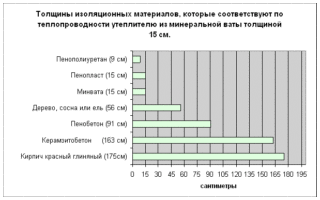 A porous structure with air bubbles inside prevents the rapid passage of heat through the basalt slab. The same goes for glass wool and slag. The higher the density of the plate, the greater the degree of isolation from heat or cold. During operation, the thermal conductivity of mineral wool can increase by 50% due to moisture absorption.
A porous structure with air bubbles inside prevents the rapid passage of heat through the basalt slab. The same goes for glass wool and slag. The higher the density of the plate, the greater the degree of isolation from heat or cold. During operation, the thermal conductivity of mineral wool can increase by 50% due to moisture absorption.
There is only one material that competes with the mineral wool for this characteristic - polystyrene foam. The advantage of cotton wool is that it consists of natural components and is cheaper.
A layer of mineral wool of 13 cm is able to replace brick masonry of 1.5 m, so with this material it is advantageous to save on construction and heating costs.
Frost resistance
The GOST documents do not indicate frost resistance indicators that manufacturers must comply with, but it is known that it is not recommended to cool glass wool below 60 degrees, which corresponds to the natural conditions of the far north. For stone wool, this figure is much higher: cooling to minus 190 degrees does not harm the material at all.
Soundproofing
Using mineral wool, you can reduce indoor noise. Due to the porous structure, sound waves do not propagate at normal speed, but slow it down when passing through the fibrous structure, where the speed and strength of sound drop significantly.
Toxicity
Due to the presence of a phenol-formaldehyde resin binder, it was previously believed that mineral wool can cause health problems when phenol is vaporized. Recent studies prove that phenol does not evaporate at ordinary temperatures. Mineral wool insulation received a 3 degree carcinogenicity, which also includes coffee and tea, daily consumed by people.
Fire resistance
All types of mineral wool are non-combustible materials, but their melting point is different. The most resistant is basalt wool - its fibers begin to melt after 2 hours of exposure to a temperature of 1000 degrees. After such heating, the material loses its properties and must be replaced, since the fibers sinter and shrink.
Water absorption and vapor permeability
Basalt slabs and other types of mineral wool are chosen for the low initial moisture content of the material, which contains 1% water. There are hydrophobized specially processed materials, which, when completely immersed in water, can absorb no more than 6% of the liquid. Common species absorb up to 30%.
Steam penetrates freely through the insulation-cotton wool, so when using it for internal work, you can not worry about the presence of condensation on the walls.
Advantages and disadvantages
Like any building material, mineral wool has advantages and disadvantages. The pluses include:
- fire safety;
- the absence of deformations during temperature changes for a long time - up to 50 years;
- low thermal conductivity, temperature preservation in a room with insulated walls;
- resistance to chemicals;
- simple installation accessible to one person;
- free passage of steam.
Contrary to the opinion that rodents and other pests do not settle inside, they feel good in mineral wool. This is further evidence that the material is environmentally friendly.
Disadvantages:
- Compared to polystyrene, which is also used to insulate facades, cotton wool has more weight, so it costs more.
- It is necessary to additionally process the material against the accumulation of moisture, but now the industry is already producing hydrophobic varieties that are slightly more expensive than conventional ones.
Most often, the disadvantages of the building material are manifested if it is incorrectly selected, not taking into account all the criteria for the operation of the object.For example, if you buy glass wool for insulation of a chimney, which is very hot during the heating season.
Mounting Methods
There are two ways to lay insulating material - dry and wet. In the first case, the frame is mounted, then minvata is laid in the gaps. In the second, plaster is applied and a plate is glued to it. With the wet method, special adhesives are also used. Mineral wool cylinders, consisting of two parts, the so-called shell, are used for pipe insulation. Fasten two halves with adhesive tape or wrap with wire.
Mineral wool for floor insulation
The process of floor insulation is as follows:
- Surface leveling - putty chips and cracks.
- Laying waterproofing.
- Installation of insulation. Fixing to the floor is optional.
- A vapor-insulating material so that water molecules can freely pass and not linger between the insulation and concrete.
- The final screed.
The fill field, you can proceed to the decorative arrangement of the floor. Dense grades of mineral wool are used that can withstand the pressure of a concrete screed.
For wall insulation
For internal and external works, a material with a different degree of density is chosen. Insulation of walls outside with mineral wool is carried out in the following sequence:
- The thermal conductivity of the wall material is calculated, its characteristics for a particular region.
- A suitable insulation is selected in terms of density and thickness.
- Wooden walls before installing the insulation are covered with solutions against microorganisms, concrete are cleaned of old plaster. You must also remove all fasteners that could damage the basalt slab.
- A vapor-permeable film is laid on the walls with the porous side to the wall, smooth - out.
- A profile is set, in the grooves of which mineral wool will be laid. The thickness of the grooves should correspond to the thickness of the insulation.
- Additionally, the plates are attached with dowels with wide caps that are located between the joints.
- A layer of film is placed on top of the insulation, which removes steam from the inside.
- Profiles are installed on the film for organizing a ventilated facade. They will be mounted finish.
If plaster is planned, it is better not to use mineral wool, but to replace it with extruded polystyrene, on which the composition fits well.
Popular manufacturers of mineral wool
The products of both domestic and foreign manufacturers are entering the building materials market. They differ in composition, properties and price.
Knauf
The company's assortment has a large selection of heaters that differ in their intended purpose - acoustic, heat-insulating, hydrophobic. Knauf produces plates and rolls of different sizes, which simplifies installation. The composition does not contain substances such as phenol or acrylic, so the material is considered absolutely safe, can be used in hospitals and child care facilities. The company produces only one type - glass wool.
TechnoNikol Rocklight
The Technonikol Rocklight company manufactures basalt slabs from igneous rocks. This material is more resistant to environmental influences, which is important for the construction of houses in the middle lane.
Ursa
Ursa company produces heat-insulating materials using sand, that is, glass wool. The main difference is the hydrophobic treatment of plates and roll materials. There are some varieties to improve sound insulation, as well as materials adapted for laying under the roof, floor, walls. Before selling all products undergo chemical and radiological control.
